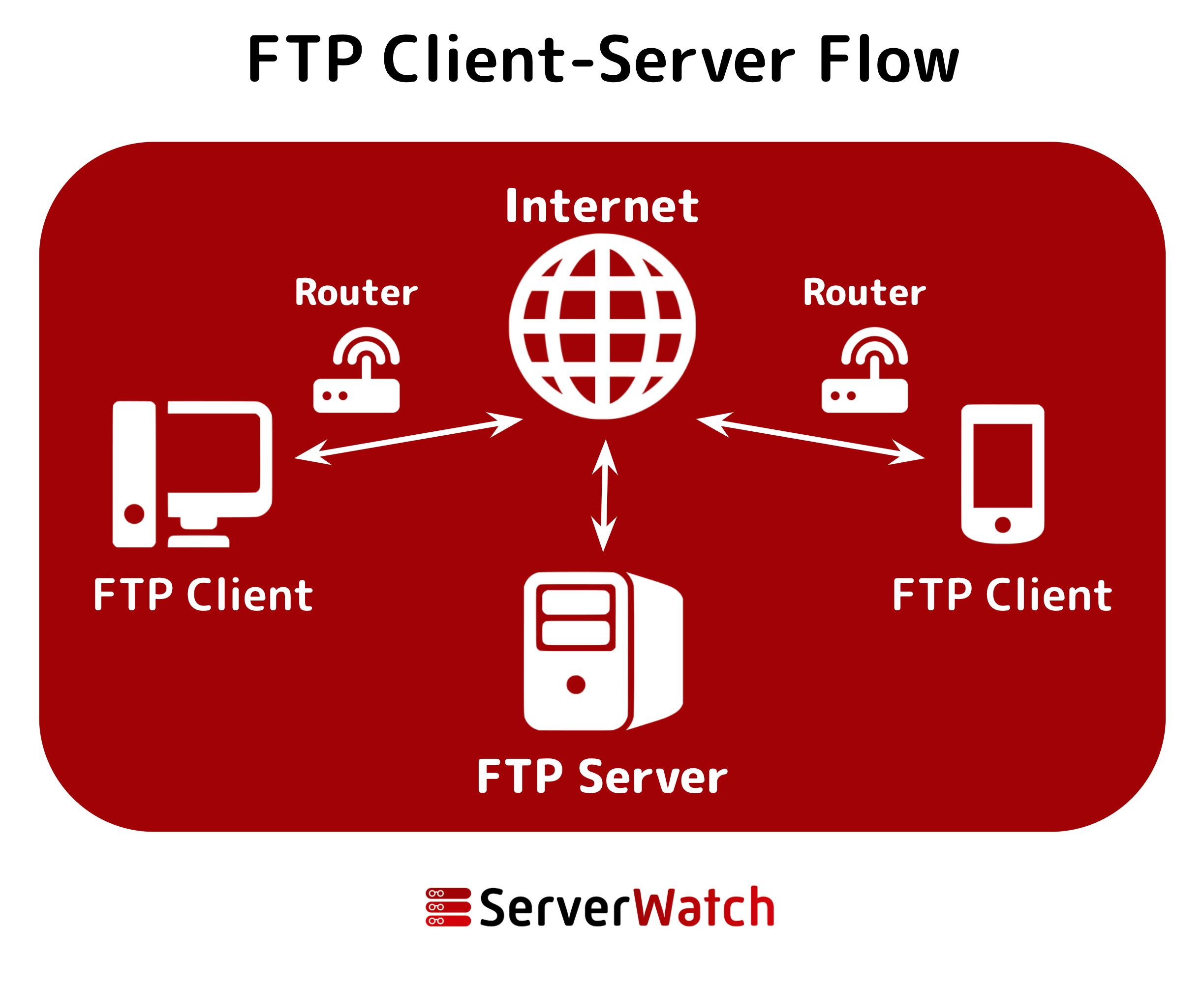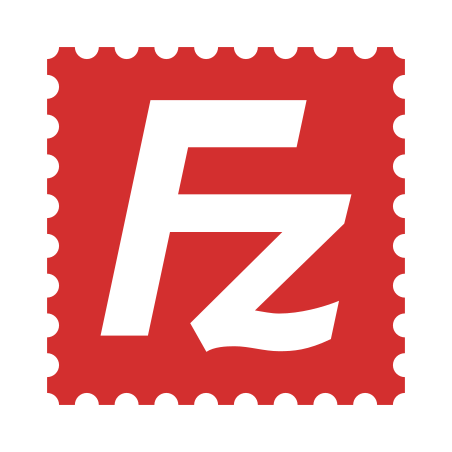A file transfer protocol (FTP) server is an intermediary for transferring files between computers on a network.
While FTP servers traditionally were a physical unit in an organization’s back end, the adoption of SaaS technology brings those capabilities to the cloud. In either environment, FTP servers are the storage mechanisms that provide the secure transfer of files of varying weights and file formats.
On-premises FTP servers will remain a component for large organizations managing complex and mission-critical file transfer requirements – but the trend towards cloud-based FTP servers is clear. Looking at the existing market, physical FTP servers typically have the fullest set of features needed for enterprises.
This article looks at what a traditional FTP server is, how it works, examples of modern FTP services, and more.
Learn more about the range of server types, functions, and purposes in our Guide to Servers.
What is the File Transfer Protocol?
The File Transfer Protocol (FTP) is a communication standard for transferring files over a network. Designed for the client-server model architecture, FTP servers allow users to sign-in and access files. Most FTP servers today implement stronger security with SSH-enabled FTP (SFTP), and TLS-enabled FTP (FTPS). The newest iteration, managed file transfer (MFT), has an even more robust approach to FTP and is aimed at enterprises.

How Do FTP Servers Work?
FTP servers go beyond other servers in facilitating file transfers over the internet. The above graphic shows how FTP servers act as an intermediary between devices. With two devices known as FTP clients connected to the internet and a specific FTP server, the server enables the uploading and downloading of data between the two parties.
How different FTP servers differ often is the security of accessing the FTP. In the realm of cybersecurity concerns, some FTPs allow for anonymous connection while others require a username, password, or MFA.
Features of FTP Servers
The following features are typical for modern FTP server solutions:
| Level | Features |
|---|---|
| Activity | On-demand reports, audit log archive, inactive user suspension |
| Cloud | Dedicated network firewalls, vulnerability scanning, full backup or offsite replication, high availability servers |
| Folder | Email notifications, flexible directory structure, limited folder views per user, file retention controls, granular user permissions |
| Compliance | Designations for SSAE-18 SOC1, SOC2, or SOC3; ISO 27001; GDPR; PCI-DS; HIPAA |
| Site | FTP, FTPS, or SFTP; file sharing links; data-in-transit encryption; branded web UI (HTTPS); dedicated IP and custom SSL certificate |
| User | Password authentication, SSH key authentication (SFTP), MFA, multiple user and admin roles |
FTP Servers vs. Cloud FTP Solutions
With the advancement of cloud computing, cloud service providers offer a worthy alternative to traditional FTP servers. Both offer online file transfer and sharing features, but how do they differ?
| Issue | FTP | Cloud |
|---|---|---|
| Threats | Lacks traceability for access | Cloud-based vulnerabilities |
| Cost | High upfront cost | Subscription and scale-based |
| Mode of Access | Client access FTP server | Client access web browser |
Though FTP servers have long been the enterprise choice for file transfer, today’s cloud solutions tend to offer more advanced features with increasing security awareness. With the convenience of the cloud and a lower cost, the migration of FTP tasks to the cloud is a reasonable trend.
Applications like Google Drive and Dropbox are known for being alternatives to FTP servers. As platforms that can do everything an FTP does, both are examples of cloud-based FTP servers.
FTP Solutions

FileZilla
The dominant free FTP solution is the open-source software, FileZilla. Supporting FTP and its two encrypted forms (SFTP and FTPS), FileZilla works on Windows, Linux, and macOS. Features include supporting the transfer of files larger than 4GB, tabbed user interface, and configuration for remote file editing, transfer speed limits, and directory synchronization. FileZilla Pro goes further with a long list of integration options like AWS, Azure, Dropbox, GCP, and OpenStack.

Files.com
Angled more towards businesses, Files.com describes itself as “smart cloud storage” for modern teams. The Files.com platform includes features like an API and SDK for in-house development; SSO via any OAuth, SAML, or LDAP provider; and group and multi-level user management. With security and encryption a priority, the firm makes compliance easy with targeted features for HIPAA and GDPR implementation. Plans start at teams of five, with custom quotes coming in for teams over 30.

ExaVault
Hailing from Oakland, California, ExaVault is a dedicated SFTP provider for both modern and traditional file transfer workflows. The vendor boasts a modern web-based interface with proven security and FTP. Features include unlimited users, real-time notifications, and an API for developers. ExaVault offers four plans with quite a range of features between sharing, automation, and advanced controls capabilities. At the upper end, their Enterprise plan includes 1TB+ of file storage, 2 million daily transactions, and unlimited API credentials.

Transmit 5
Priding itself as the “gold standard of macOS file transfer apps,” Panic’s Transmit 5 is for everything Apple. Transmit 5 is compatible with 11 cloud services and able to handle FTP, SFTP, WebDAV, and S3. New features include Panic Sync, the firm’s method for site syncing that supports local-to-local and remote-to-remote sync. Panic offers single-use up to 1000 copies of the Transmit 5 license on their website, with discounts for larger orders.

Globalscape
Launched in 1996 in San Antonio, Texas, Globalscape is a managed file transfer (MFT) software vendor providing FTP to organizations utilizing Windows. A range of plans are available for SMBs to large organizations. Globalscape offers its Enhanced File Transfer (EFT) Arcus product as a cloud-based MFT (MFTaaS) that provides secure access protocols, data visibility, governance, and automation. Alternatively, Globalscape’s EFT for on-premises (EFT Enterprise and EFT Express) offers advanced features and the highest levels of data security.

SmartFile
Focused on supporting enterprise needs, SmartFile includes on-premises, cloud, and hybrid services for organizations needing scalability. Product features include granular controls for file permissions, tracking and file activity, file versioning, and user management. For the enterprise looking for on-premises FTP capabilities, SmartFile’s FileHub is a virtual file management server that connects storage globally and load balances with HAProxy.

Where Did FTP Originate?
In April 1971, a young computer scientist at MIT, Abhay Bhushan, published RFC 114 detailing FTP and e-mail protocols for what would become the internet. As the decade progressed, the Transmission Control Protocol and Internet Protocol (TCP/IP) became the basis for networking and formalized the means of direct and indirect access with a remote host.
Featured Partners: File Sharing Software
Zoho Assist
With Zoho Assist File transfer, you can send and receive files and folders during your remote sessions. Effortlessly transfer and manage files as large as 5 GB in size with no maximum limit for a single transfer. Files of all formats can be shared without dependence on intermediate storage, like USBs or cloud-based storage devices, keeping your workflow uninterrupted and your data protected.


